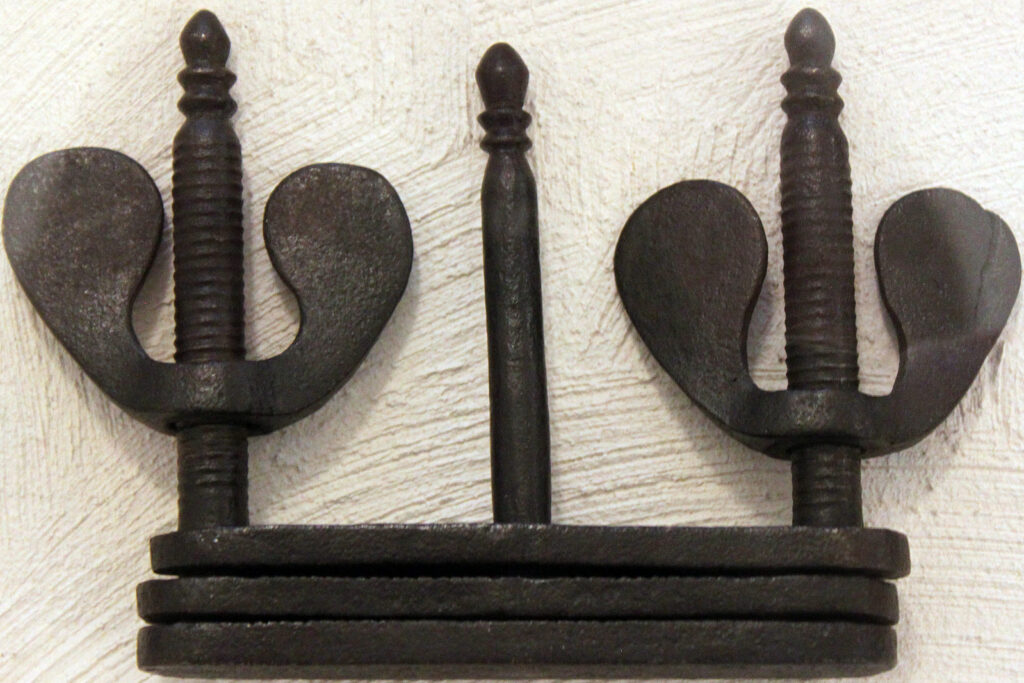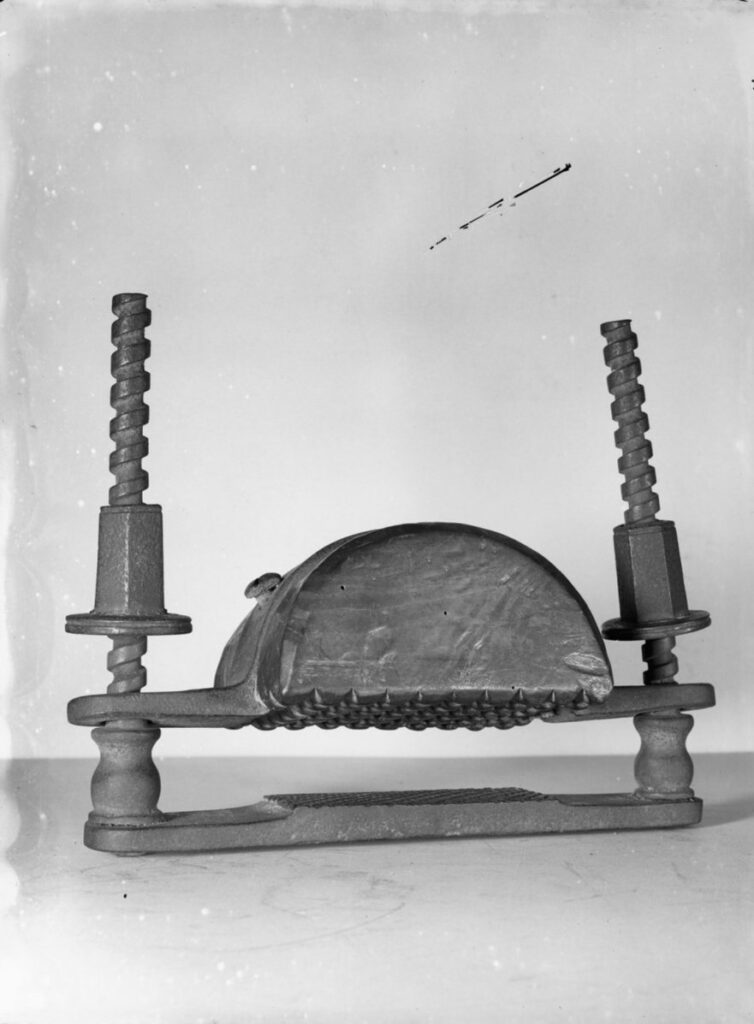Interrogation techniques have evolved over hundreds of years. Sometimes these methods can be as simple as bright lights or changing the temperature in a room. But sometimes the tactics are more aggressive or violent.
These kinds of methods border on forms of torture. This was the predominant technique for convincing someone to do something they did not want to do for thousands of years.
Modern torture has made the news with reports from Guantanamo Bay and Abu Ghraib prisons. But even waterboarding and electric shocks are not as gruesome as some forms of medieval torture.

What are Thumbscrews?
Although not the most brutal or disgusting form of torture, thumbscrews were nonetheless a disgusting and perilous form of torture. They acted as a simple vice, with two plates slowly tightening with screws.
Generally, the thumbscrews were placed on either a victim’s thumbs (as the tool’s name implies) or big toes. They were then slowly tightened to crush the appendage. Sometimes, the plates would have tiny spikes or other harmful items attached to cause further harm.
As a tool of torture, it was greatly effective and favored by many as an early device to use when interrogating. This is because, unlike other methods of torture, it did not necessarily have long-lasting or life-threatening effects on its victims.
A thumbscrew could crush a finger or toe and still leave the victim conscious and in relatively good health. Many other devices caused mortal wounds or unbearable pain, making them less than useful for long-term interrogations or eliciting real honesty.
Where Were Thumbscrews Used?
Also known as thumbkins, these torture devices were widely popular during the Spanish Inquisition. The Inquisition was famous for its especially brutal techniques of combating heresy as a way of solidifying power in a newly unified nation.
The regions of Aragon and Castile were united through the marriage of Ferdinand and Isabelle. The new regents sought to solidify their power by directing their own inquisition. The previous inquisition had been directed by the Pope, but they did not want to defer any power to an outside authority.
Both the king and queen wanted to solidify Spain as a Roman Catholic culture. It had been a much more diverse religious land in previous centuries. The population was largely Christian, but there were large pockets of Jewish and Muslim worshipers that the king and queen threatened to convert to Christianity.
After many converted, the church and regents began to believe that those who had been forcibly converted may be a threat to the Church and Spanish society. Therefore, they began torturing individuals to discover who was a heretic, or a fake Christian.

When Were Thumbscrews Used?
Spanish inquisitors used many forms of torture against supposed heretics. But they preferred the thumbscrew for early interrogations. The device would elicit horrible pain. But it would leave the victim conscious, and thus capable of answering questions.
It was also simple enough that one tool could be used on each finger and toe before moving on to more strenuous and elaborate torture techniques. This would draw out many false admissions of guilt, just to avoid any further pain.
Finally, it was also not a fatal tool. This was unlike many other forms of torture which would either directly cause death through physical mutilation or indirectly through sepsis or immense shock.
How Did Thumbscrews Become Common?
Although recognizable in Spanish history because of its wide use during the Inquisition, thumbscrews could actually be found throughout the medieval European world.
One rumor holds that the tool started as a punishment used by Russian officers to keep their troops in line. They say that a Scottish man brought the design back to the United Kingdom.
Another theory states that the Spanish Armada introduced thumbscrews to the British. They saw it as a fitting tool to be derived from a nation conducting the Inquisition. Either way, it became a common tool amongst those who wanted to inflict pain on others or gain information.
How Long Were Thumbscrews Used?
Olaudah Equiano offers up a firsthand account of witnessing the use of thumbscrews in his autobiography The Interesting Narrative of the Life of Olaudah Equiano.
Equiano was an African man who was enslaved. He was sold multiple times throughout the Americas before finally purchasing his own freedom in 1766. He became a fierce abolitionist and sought to disassemble the system that had disrupted his life.
In his autobiography, he describes the use of thumbscrews as a method of torturing the enslaved. This demonstrated that the tool had reached beyond the medieval age and beyond Europe. In an age where the enslaved were beginning to rebel for their freedom, the thumbscrew became a wicked tool of power before finally fading out of use before the 20th century.
Whether human nature is inherently good or evil has been debated since the dawn of man. But the existence of tools such as the thumbscrew seems to lend credence to the latter argument.
It is difficult to imagine who could create such a twisted device. One that is intended to maximize the amount of harm you could inflict on another person. But then again, it was also the first device used when torturing someone for a reason. There were worse fates than being subjected to a thumbscrew.
References
Grabianowski, Ed. “10 Medieval Torture Devices.” How Stuff Works, May 17, 2023. https://history.howstuffworks.com/10-medieval-torture-devices.htm#pt2.
“Thumbscrews.” Medieval Life and Times, March 2018. https://www.medieval-life-and-times.info/medieval-torture-and-punishment/thumbscrews.htm.
“Thumbscrew Torture Device.” Medieval Chronicles. https://www.medievalchronicles.com/medieval-torture-devices/thumbscrew-torture/.

